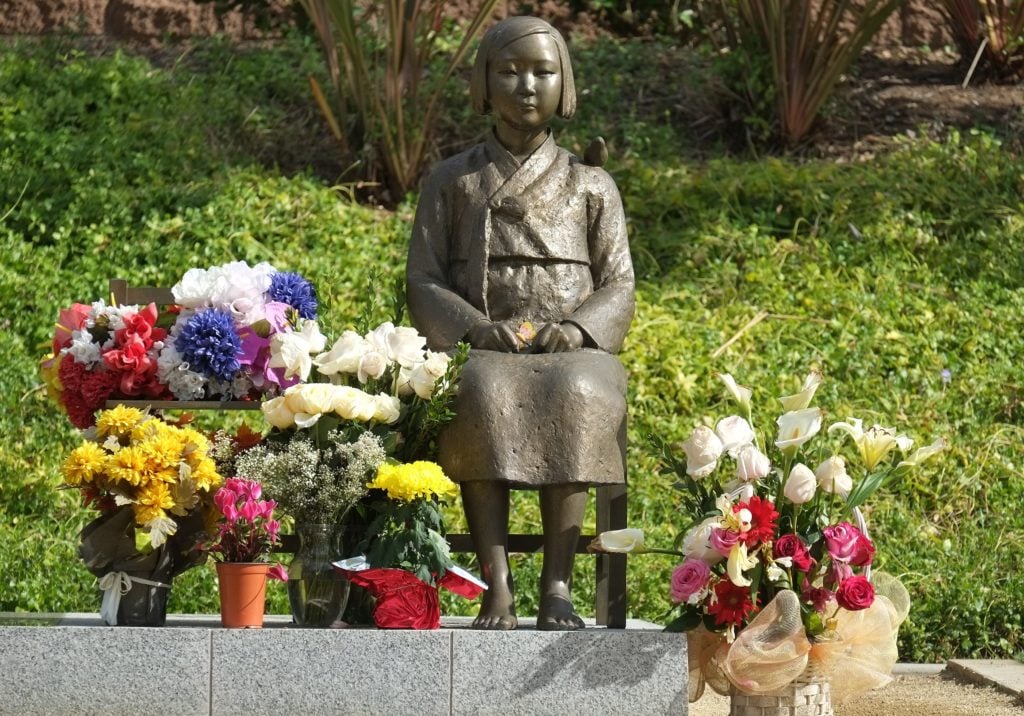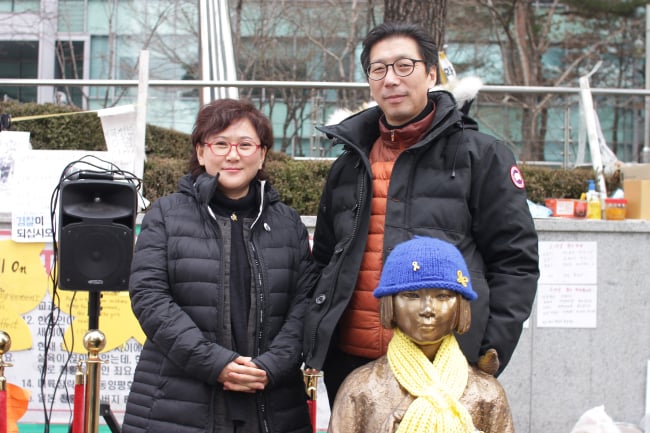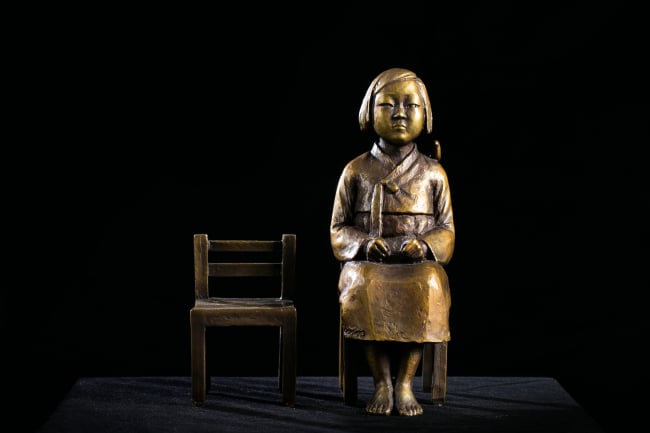Politics
Japan Recalls South Korean Ambassador in Protest of ‘Comfort Women’ Memorial
The statue points to a dark chapter in Japanese-Korean relations.

The statue points to a dark chapter in Japanese-Korean relations.

Sarah Cascone

A statue acknowledging a dark chapter in Japanese-Korean relations has become a source of contrary in Busan, South Korea. In protest of a memorial to the thousands of “comfort women” forced into sexual slavery by the Japanese military during World War II, the Japanese recalled its ambassador and one of its consuls from South Korea on January 6.
Activists installed the controversial statue in front of the Japanese Consulate in Busan on December 28, the one-year anniversary of Japan’s first official apology to South Korea over the military brothels.
Japan immediately called for the statue’s removal, calling it a violation of the spirit of the 2015 agreement, in which it promised $8.3 million to surviving victims. The statue was temporarily taken down, but it has since been reinstalled.
The bronze artwork depicts a young girl with short hair, in a traditional Korean hanbok, sitting barefoot with her hands in her lap. Beside her is an empty chair, representing the victims who have died. Titled Statue of Peace, the piece is the work of husband-and-wife artist team Kim Woon-sung and Kim Seo-kyung, who have installed copies of the sculpture at various locations around the world.
The original sits outside the Japanese embassy in Seoul, where it was installed in 2011 on the occasion of the 1,000th Wednesday demonstration. Launched in the 1990s, the weekly protest demands Japan apologize for the enslavement of the comfort women.

Kim Woon-sung and Kim Seo-kyung with their original Statue for Peace monument. Courtesy of the artists.
Ahead of the agreement reached by the two governments in December 2015, there was talk of removing the original Statue of Peace, which Japan has requested since the work’s unveiling.
“If Japan were sincerely apologetic and remorseful, it should be putting a statue like this in front of its government complex in Tokyo,” Kim Woon-sung told the Hankyoreh, a Korean news outlet, at the time. “The very idea of taking down the statue as a precondition [for an apology] is dishonest.”

Kim Woon-sung and Kim Seo-kyung, Statue for Peace monument. Courtesy of Gallery Godo.
As reported by the New York Times, the Japanese Ministry of Foreign Affairs is not saying when Ambassador Yasumasa Nagamine and Consul General in Busan Yasuhiro Morimoto will return to their posts in South Korea. Japan has also suspended currency swap negotiations and other economic talks with South Korea in protest of the placement of the new statue.
“We want to stress again that despite difficult issues facing us,” said South Korean foreign ministry representative Cho June-hyuck in a statement, “both governments must strive to develop bilateral relations based on mutual trust.”